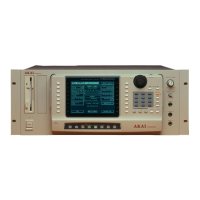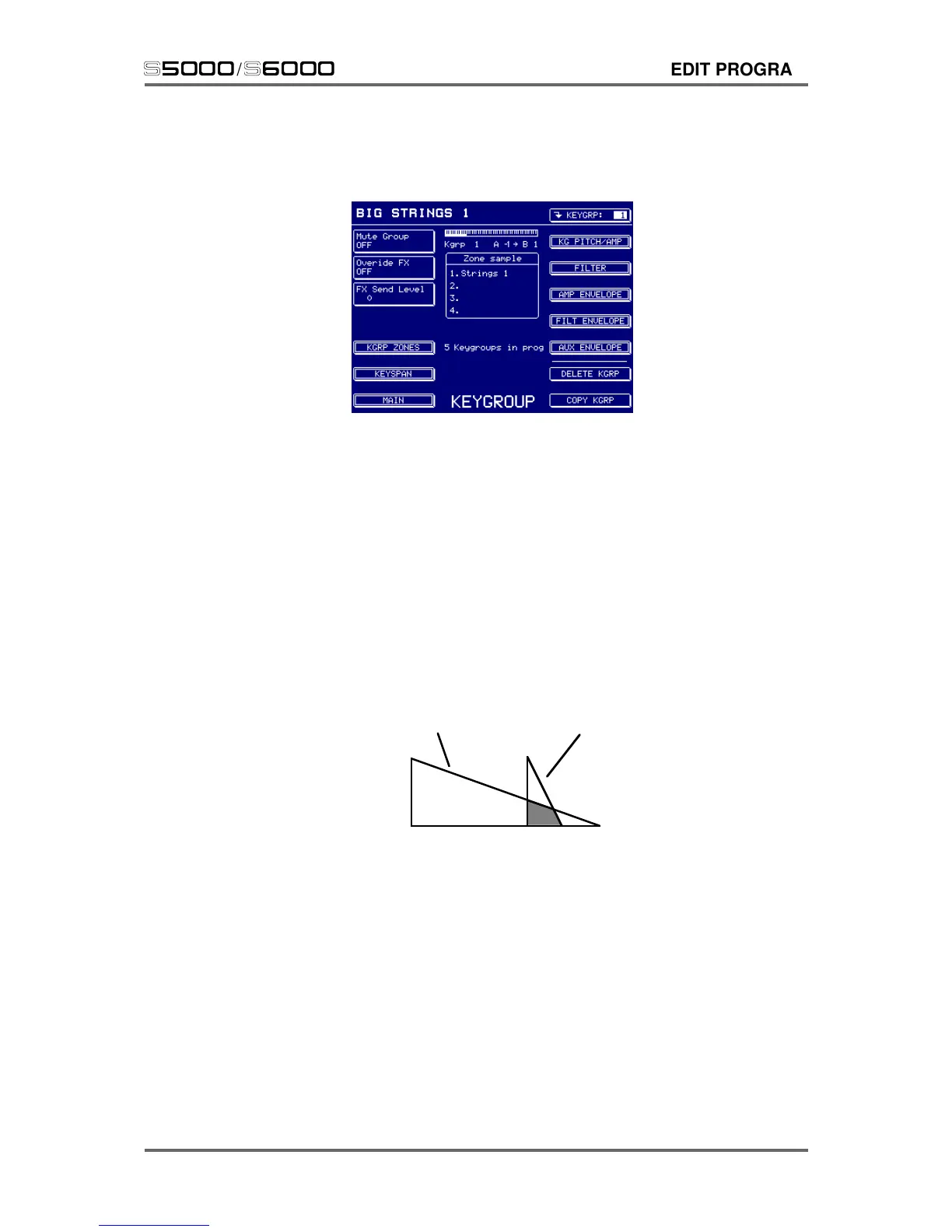Version 1.21 95
s5000
/
s6000
EDIT PROGRAM
KEYGROUP
So far we have seen functions that affect the program as a whole. The KEYGROUP pages allow
access to edit the individual keygroups. Pressing KEYGROUP shows this screen display:
The parameters are:
MUTE GROUP This allows you to group several keygroups together so that they are
essentially monophonic. The main reason for this is for drums where
sometimes you want a sample to stop playing when another is played.
For example, you would want a closed hi-hat to stop an open hi-hat. To
do this, simply assign all the relevant keygroups to the same Mute Group.
For example, if all your hi-hats are in keygroups 3-6, assign those
keygroups to, say, Mute Group 1. All other keygroups will be unaffected
but all those in mute group 1 will be mutually exclusive - that is, if one is
sounding when another is played, it will be cut. For example:
OPEN HI-HAT
(or trian

